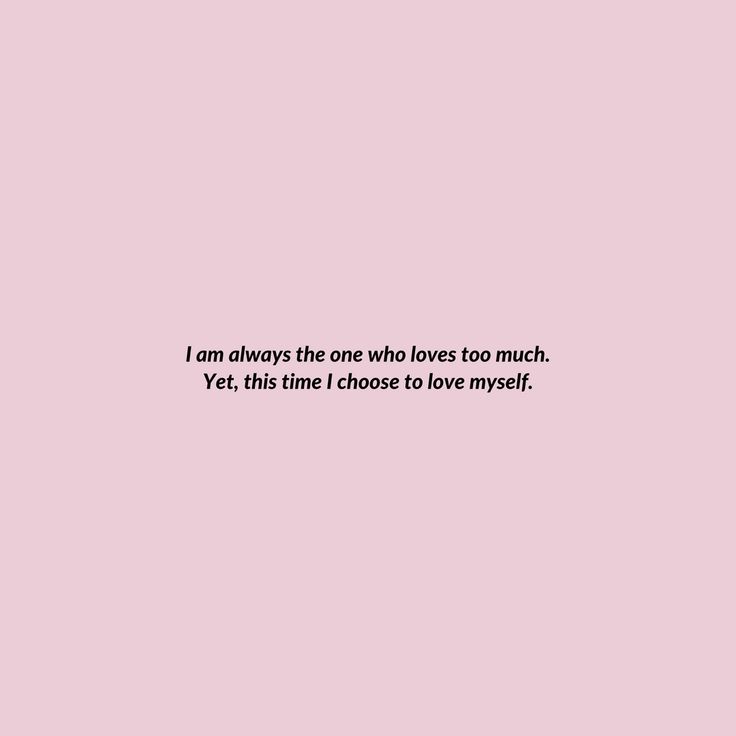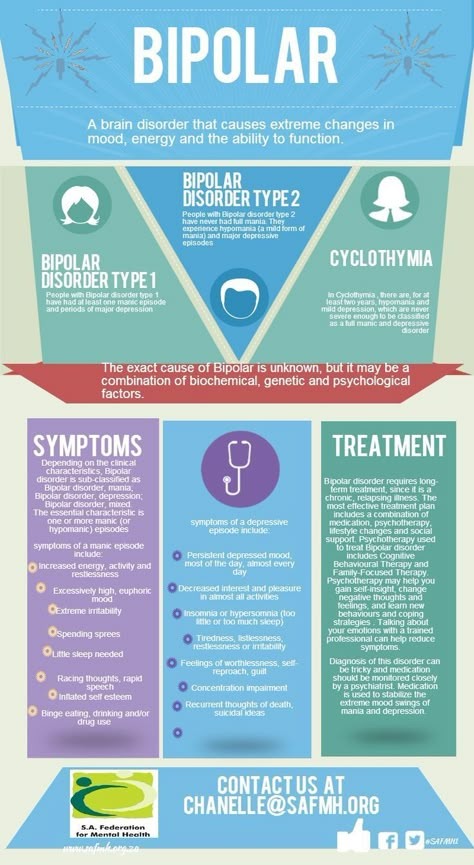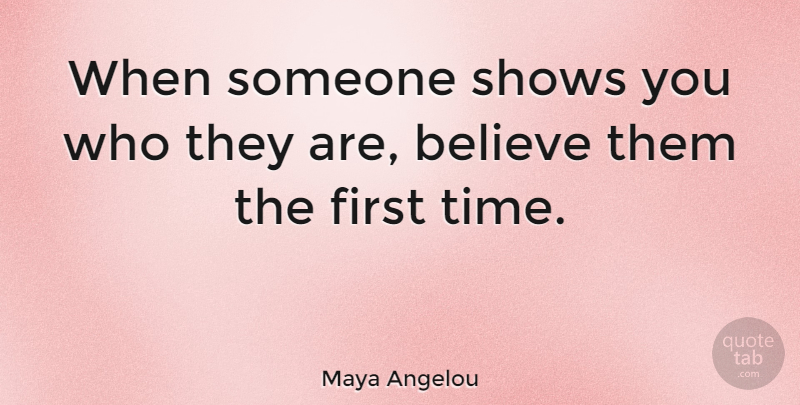Non hierarchical polyamory
Is Non-Hierarchical Polyamory the New Relationship Goalpost?
I first heard about non-hierarchical polyamory when one of my crushes DMed me about it. After a series of incoming DMs (the modern day ‘do you like me? Circle Y or N) he introduced me to this term as a response to the critically acclaimed question, “What are you looking for?”
Non-hierarchical polyamory, a hashtag with 1.8 million views on TikTok, grew out of polyamory as a way to practice multiple simultaneous relationships without imposing any form of hierarchies on those relationships. This means that there is no ranking system of primary and secondary partners within romantic and/or sexual relationships. When it comes to decision making, no particular relationship is designated as having the right to set requirements or limits on the other relationships in the network. Partners and metamours (your lover’s lovers) make decisions that are intended to be collaborative and consultative rather than rule-based.
No person has extra influence or “say'' over any of their partner’s relationships, despite traditional relationship markers such as living together, shared expenses, years spent together or co-parenting a child.
My gut reaction to learning about non-hierarchical polyamory was surprise. Not only about the concept (I’d heard of this dynamic before but did not know the terminology) but more about his ability to directly communicate truthfully about what he wants in life rather than intentionally omitting it (lying™) until the drawn out “what are we?” conversation in which a monogamous relationship becomes a proverbial dangling carrot or an elephant in the room depending on how you’re feeling when it comes up. I really appreciated his ability to communicate his truth, even if we had different desires around our intimate relationships. Or did we?
I have always possessed an alternative sensibility. Born into a family of Sinatra-style “My Way” blue collar entrepreneurs, I see things instinctually from a DIY approach.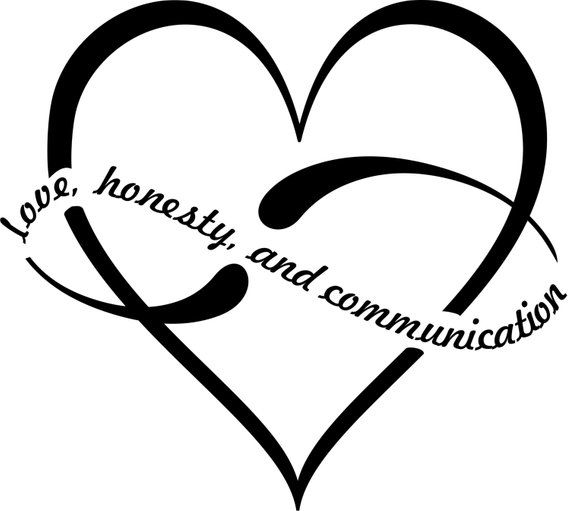 From the food I cook to the art I make, my career choices and my most meaningful relationships—everything I value in my life is a result of going with my gut rather than societal standards. My love life has been no different. I’m a quality-over-quantity kind of person when it comes to intimacy, and a person-over-gender type, as well. So of course the idea of loving without possessiveness sounded beautiful to me, but still, it felt unnatural to imagine myself genuinely content in a non-hierarchical dynamic. Or maybe I’d just never seen it carried out peacefully before. Honestly, it felt like there was a rule set in place, and the rule was that there were “no rules.” Somehow, it felt kind of constricting. The irony was not lost on me. I turned to nature for some wisdom, as I do for all of life’s big questions.
From the food I cook to the art I make, my career choices and my most meaningful relationships—everything I value in my life is a result of going with my gut rather than societal standards. My love life has been no different. I’m a quality-over-quantity kind of person when it comes to intimacy, and a person-over-gender type, as well. So of course the idea of loving without possessiveness sounded beautiful to me, but still, it felt unnatural to imagine myself genuinely content in a non-hierarchical dynamic. Or maybe I’d just never seen it carried out peacefully before. Honestly, it felt like there was a rule set in place, and the rule was that there were “no rules.” Somehow, it felt kind of constricting. The irony was not lost on me. I turned to nature for some wisdom, as I do for all of life’s big questions.
Much of the natural world is inclined toward establishing hierarchies. Primates, birds and wolves, for example, organize themselves into hierarchies when competing for food, space and mating partners by asserting dominance for survival. Remember the cafeteria scene in Mean Girls? That felt so real because it was. People are animals. So when, and how, did we begin coupling up? While some scientists say that single partnership became an evolutionary advantage because it decreased the spread of STIs (tale as old as time…literally). Some anthropologists believe that monogamy developed around the same time that farming did to increase wealth and protect offspring (*Succession theme song*). Either way, monogamy caught on, as did the practice of other relational constructs like paying a dowry for a wife and arranging marriage to maintain social status.
Remember the cafeteria scene in Mean Girls? That felt so real because it was. People are animals. So when, and how, did we begin coupling up? While some scientists say that single partnership became an evolutionary advantage because it decreased the spread of STIs (tale as old as time…literally). Some anthropologists believe that monogamy developed around the same time that farming did to increase wealth and protect offspring (*Succession theme song*). Either way, monogamy caught on, as did the practice of other relational constructs like paying a dowry for a wife and arranging marriage to maintain social status.
So that got me thinking, if we ain’t nothing but mammals, does that make us instinctually inclined to establish hierarchies in our relationships? Or is it an outdated societal compulsion? Are some human beings, as our species evolves, becoming more ideologically oriented to equalizing the distribution of authority in their intimate lives than others?
The terms ‘best friend’ and ‘soul mate’ come to mind.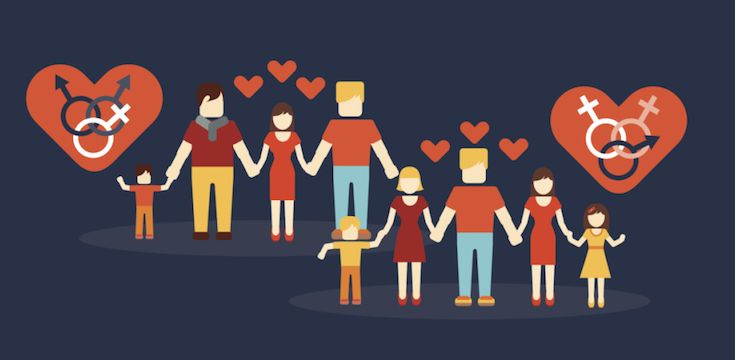 These terms are usually used to describe the deep feeling of love and connection we feel around someone. It’s kind of unexplainable. That powerful feeling creates meaning, and that meaning solidifies a bond. When you get the best news of your life, for example, that person flashes in your mind as the first one you want to tell. How, in a relationship with multiple partners, is this kind of impulse expressed? Perhaps, in a display of true modern love, a group text is sent. Or maybe, for some people, it just isn’t such a big deal to focus on who knows what first. Maybe some people can just be chill for once *stares into a mirror with single tear.* Just kidding. Kinda.
These terms are usually used to describe the deep feeling of love and connection we feel around someone. It’s kind of unexplainable. That powerful feeling creates meaning, and that meaning solidifies a bond. When you get the best news of your life, for example, that person flashes in your mind as the first one you want to tell. How, in a relationship with multiple partners, is this kind of impulse expressed? Perhaps, in a display of true modern love, a group text is sent. Or maybe, for some people, it just isn’t such a big deal to focus on who knows what first. Maybe some people can just be chill for once *stares into a mirror with single tear.* Just kidding. Kinda.
Turns out we humans are getting the hang of exploring relationships outside of societal norms—or at least we’re finally being honest about it. A poll of 1,300 U.S. adults conducted in January 2020 by YouGov found that "Among U.S adults who are in a relationship, 23 percent say their current relationship is non-monogamous to some degree.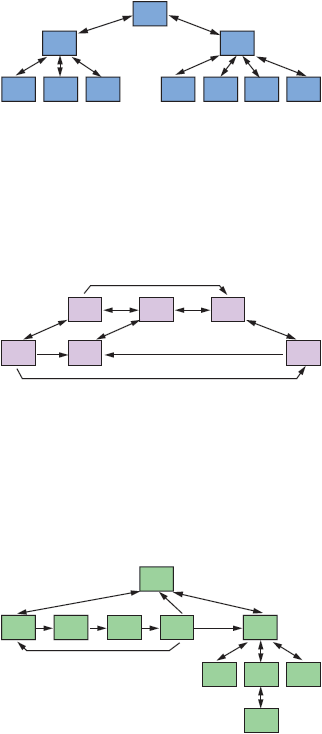 About three in 10 (31%) Millennials in a relationship say their relationship is non-monogamous. Of this group, 8 percent define their relationship as completely non-monogamous. When I read this, I thought,
“cool.”
About three in 10 (31%) Millennials in a relationship say their relationship is non-monogamous. Of this group, 8 percent define their relationship as completely non-monogamous. When I read this, I thought,
“cool.”
As we all know by now, Western society has indoctrinated patriarchal, imperialist, heteronormative standards for love. Clearly, these standards simply do not work for everyone, but must be stated that some of the most resonate masterpieces are born from the feeling of jealousy and betrayal. Why, for example, does "Ring The Alarm" hit so damn hard? Because it taps into the deeply animalistic and universal feeling of betrayal. Just saying.
I think, for some members of our human species, exploring a non-hierarchical polyamory lifestyle will open doors to self-perception and acceptance that will make positive changes in our society for decades to come. Perhaps even more artistic masterpieces will be born from the feeling of liberation that it can inspire. I think for others, a non-hierarchical polyamorous relationship could send you into a tailspin that could create trauma for yourself and anyone who will listen for decades to come.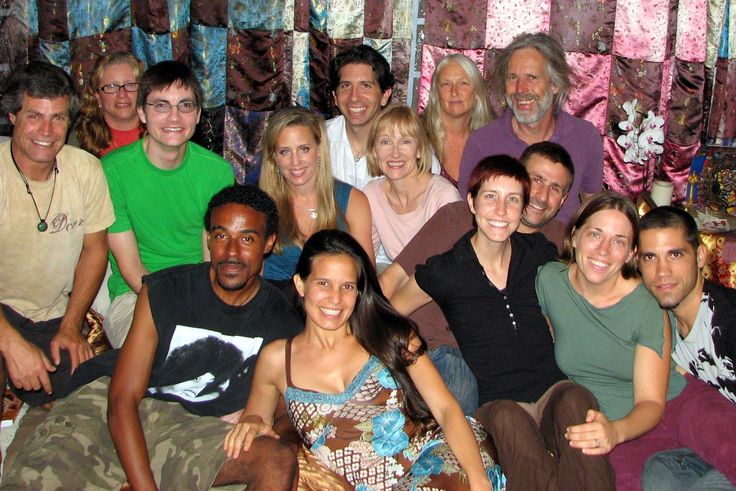 It’s understandable to desire security and organization around your love life in this deeply chaotic world, and it’s also cool to lean into a more surfs up attitude (technical term.)
It’s understandable to desire security and organization around your love life in this deeply chaotic world, and it’s also cool to lean into a more surfs up attitude (technical term.)
Hierarchical Polyamory vs. Non-Hierarchical Polyamory
If you’re reading this, chances are you have met a polyamorous person who has told you that they practice either hierarchical polyamory or non-hierarchical polyamory.
Perhaps it’s in their bio on a dating site, or perhaps you’ve been on a couple of dates with someone and they’ve brought it up, and rather than ask them the bazillion questions you want to ask, you’ve trotted off home and rushed to Uncle Google.
Maybe your question has nothing to do with another person and you’re just curious to learn more about polyamory and the many ways in which it is lived and experienced, perhaps because you think that you may be polyamorous yourself!
With this in mind, I decided to create an easy-to-understand breakdown of just what hierarchical polyamory and non-hierarchical polyamory are, free from all the jargon and philosophising that you may find on websites geared towards those already in the scene.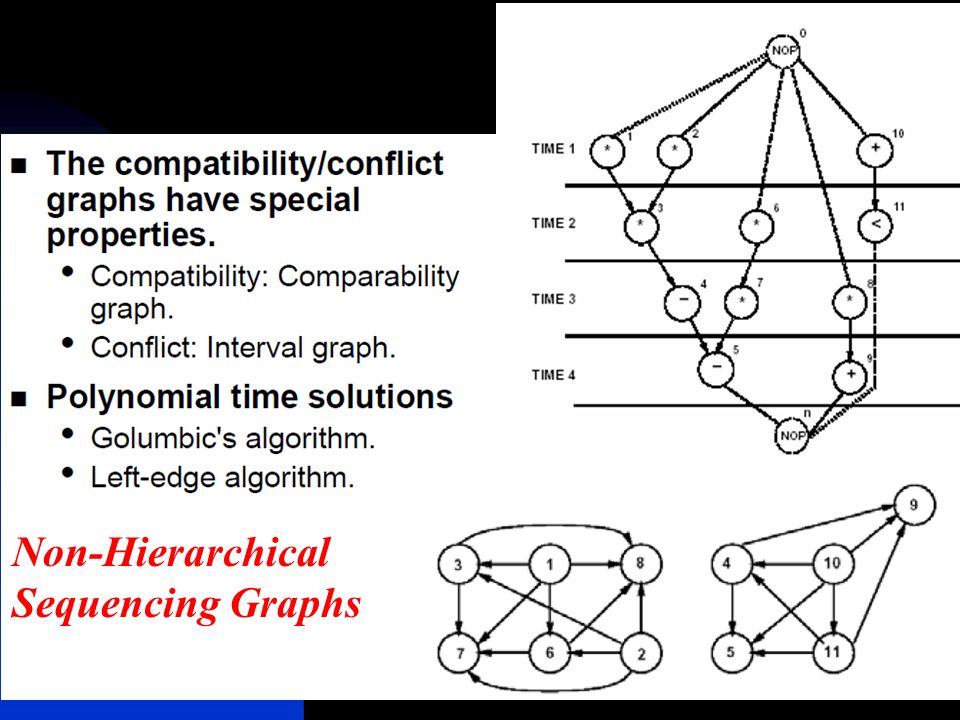
First, we’ll explore what polyamory is as a whole, before outlining what hierarchical polyamory is, how it differs from non-hierarchical polyamory and a couple of arguments for and against both, so that hopefully, by the time you’ve finished reading, you’ll have more of an idea of what these two concepts are and which side of the fence you lie on.
Are you ready?
Great, so let’s dive right in.
Hierarchical Polyamory vs. Non-Hierarchical Polyamory – What’s the Difference?
What is Polyamory?
Polyamory is a relationship style based around the belief that it is possible to love more than one person, and that people are not necessarily designed to be monogamous.
Coming from the Greek word for ‘many’ and the Latin word for ‘love’ (literally polyamory means ‘many loves’ or ‘more than one love’), people who identify as polyamorous often have more than one romantic relationship simultaneously, with the full knowledge and consent of everybody involved.
The partners of one person may not necessarily be involved with each other – sometimes they might be, or sometimes they will never have even met one another.
Every polyamorous relationship is different, but the thread that holds them all together is the belief that it is possible to love more than one person.
Is Polyamory Cheating?
No, polyamory is not the same thing as infidelity, and should not be confused with somebody having an affair or cheating on their partner.
People in polyamorous relationships have set rules and boundaries, and a healthy polyamorous relationship is one where all parties have full knowledge and consent of what is going on at all times.
Therefore, polyamory is not cheating, but that doesn’t mean that polyamorous people can’t (and don’t!) cheat – if two polyamorous people have agreed that neither of them will do a specific act or date a specific person and then one person sneaks off and does it anyway, that person is cheating.
Polyamory is also different to polygamy, which is a religious-based form of non-monogamy that usually sees one man taking multiple wives. Many Muslim countries allow polygamy, and it is also sometimes practised in the Mormon community (though although the Mormon church renounced the practice back in 1890, some Mormons still enjoy a polygamous lifestyle).
It is estimated that there are 1.2 to 9.8 million polyamorous people living in the United States, which is a pretty significant number, even at the lower end of the scale!
What is Hierarchical Polyamory?
People who practice hierarchical polyamory place more importance on some relationships over others, kind of like a ‘ranking’ system.
For example, if somebody is polyamorous but has one person who they live with, co-parent with, share finances with etc., that person will likely be considered the ‘primary’ partner – in other words, the person at the top of the hierarchy.
This person will likely be prioritised when it comes to time commitments, going on vacations, spending the holidays with someone’s family and more.
They may also be the person who is consulted when it comes to making major life decisions such as moving house, buying a car or changing jobs.
People in a primary relationship with one another may also create a set of rules that both partners have to abide by when it comes to getting involved with other people. This may include no unprotected sex with others, not having children with other people, and also having the power to ‘veto’ someone if they are not comfortable with their partner dating them for whatever reason.
Other partners may be considered secondary or tertiary. For example, a secondary partner may go on vacations and spend weekends with the person in the primary relationship, while the tertiary partner may be a much more casual partner, who probably spends the least amount of time with the person and is not considered as much when it comes to decision making.
Please understand that when I say the word ‘casual,’ I don’t mean that there is not a deep and loving bond there – I simply mean that these relationships will receive less time and resources than the ones higher up in the hierarchy, and people outside of the primary relationship often have less say in what their relationship with somebody else’s primary looks like.
Does that make sense?
Good.
You are not allowed to take that sunset swing picture without me – do you hear me?!
So, What is Non-Hierarchical Polyamory?
Well, it’s exactly what it says on the tin!
In non-hierarchical polyamory, individuals within the ‘polycule’ (a polycule is a connected network of people in non-monogamous relationships) do not prioritise one relationship over all others.
This doesn’t necessarily mean that time is always split equally between partners, nor does it mean that everybody lives together and shares finances etc.
It simply means that there is no ranking system, and every partner is considered when it comes to making big decisions. Non-hierarchical polyamory ensures that certain people don’t get more privilege because they live together or have been together for longer.
Everybody is completely equal, and no one voice is more important than any other.
Non-hierarchical polyamory also means that nobody has any influence or power over anybody else’s relationships – nobody has veto power in non-hierarchical polyamory.
Matthew Kozachek explains his view on non-hierarchical polyamory as such – ‘I reject hierarchical language not because I don’t want to acknowledge that some people are going to be closer to me than others, but because I don’t want to ever think in a manner that will limit how close to me those people can become.’
Hierarchical Polyamory vs. Non-Hierarchical Polyamory – Which is Best?
Okay, that was definitely a trick question.
There is no one-size-fits-all when it comes to anything in life, and polyamory is no exception.
Some people prefer hierarchical polyamory because they are naturally inclined to consult one person when it comes to decision-making, and they feel comfortable knowing that they have the power to veto something, or someone that they are not comfortable with when it comes to their primary partner’s other relationships.
They like the guarantee that they will be the priority when it comes to family events, vacations and holidays, and no matter how many other relationships they embark on, their primary partner will always be the most important.
People who prefer non-hierarchical polyamory may not like the fact that another person can veto their relationship, or that limits are imposed on how close or important they can ever become to a person.
They may feel frustrated being somebody’s secondary partner if they do not have a primary partner of their own – after all, it can’t be nice never being the one who is invited to special events.
The only person who can decide whether they would be more suited to a hierarchical or non-hierarchical polyamorous relationship is you.
You might instinctively know the answer.
I am not polyamorous myself, but I know that if I were, I would much prefer a hierarchical polyamorous relationship, where myself and my primary partner could have other relationships whilst remaining at the top of each other’s hierarchy.
For others, you might have no clue which version of polyamory is for you, or you may initially think you prefer one thing, but in practice find you are better suited to another.
You may not be suited to either, and that’s okay too!
Perhaps you’re actually more of a sopo – somebody who practices solo polyamory.
What is Solo Polyamory?
A solo polyamorist is someone who does not have any desire to be part of a ‘coupled’ relationship. They may not live with, or share finances with anyone else, and not have the desire to do those things.
Some solo polyamorists may live with one person for part of the year, another person for another part of the year, and so on.
Some solo polyamorists are only sopo for a limited amount of time – maybe when they are raising a child or studying for their degree – and they don’t have time to navigate the complexities of a ‘primary’ relationship.
For others, solo polyamory is the way they choose to live their entire lives, and they consider their primary partner to be themselves. This means that they are the ones in charge of all of their decisions, they don’t have to answer to anybody and they can do what makes themselves and their relationships strong and fulfilled.
Hierarchical Polyamory, Non-Hierarchical Polyamory and Solo Polyamory | Final Thoughts
I hope that by now, you have a better understanding about what these terms mean and how they could apply to you and your romantic relationships moving forward.
I also hope that I have shown you that it is okay to identify with one thing over the other, and that it is also okay not to know what you identify with right now!
There is absolutely nothing wrong with trying one (or all!) of these approaches to polyamory and seeing which feels right for you.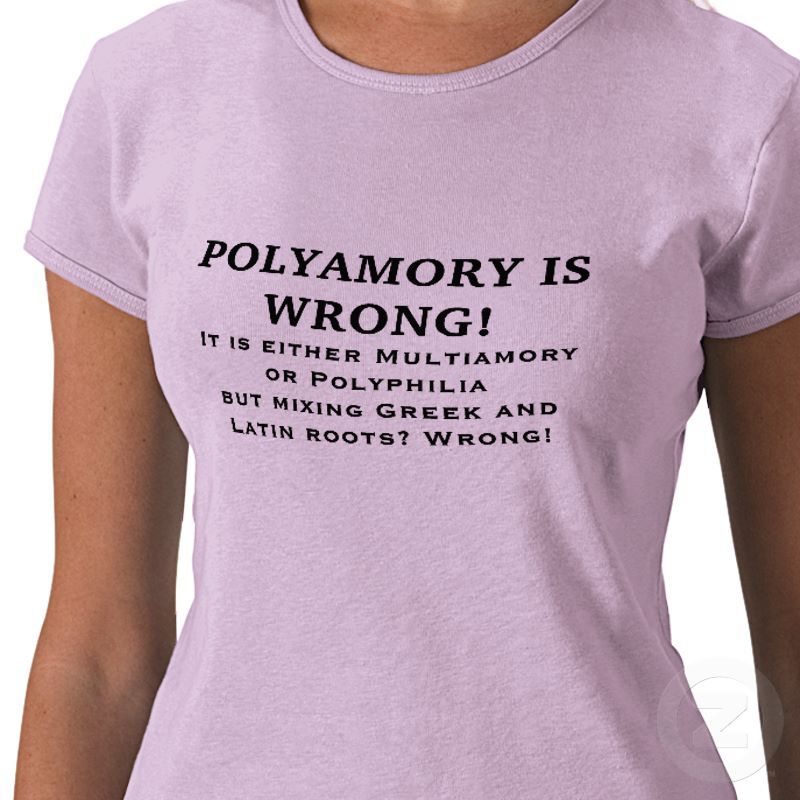 After all, what is life if not a gigantic game of trial and error?
After all, what is life if not a gigantic game of trial and error?
As long as you are open and honest with your partner/s about where your head is at, there is no reason why you can’t experiment a little with your romantic relationships to see which style of polyamory is for you.
Good luck, and don’t forget – if you’re looking for some sexy lingerie to surprise your partners with, we gotchu 😉
“I have two partners. I love them in different ways” – The City, 08/13/2021
In “The City. We're talking" as part of a special project, we've been discussing sex in Moscow all week: how Muscovites feel about it, what they like, where they like it and why. Alina Tolmacheva, an open polyamorous person, spoke about how she herself came to polyamory, what types of it are and what to do if one of the partners has children (18+).
Even more love
Polyamory is one of the varieties of ethical non-monogamy, when all participants in the relationship are aware of what is happening, and no one is against it. Here we are talking about more or less serious relationships, and not just sex. To be considered polyamorous, you must have at least two partners. You can do more - it all depends on your resource, time and opportunities.
Here we are talking about more or less serious relationships, and not just sex. To be considered polyamorous, you must have at least two partners. You can do more - it all depends on your resource, time and opportunities.
Polyamory can be different
There are many forms of polyamory. There are relationships in which one main partner. There is egalitarian polyamory, when all your partners are equal. There is hierarchical polyamory, when you have a main partner or two main partners, and the rest are secondary. There is also polyverity, when people unite in a triad and meet only with each other. Very similar to monogamy, only there are three participants.
From monogamy to polygamy
I did not come to polyamory right away, after several years of non-monogamy, frivolous things. At first, my partner decided that he was polyamorous, and encouraged me to think in this direction. It was complete trash. I had a period when I sobbed every day and did not understand why this was happening. My partner said he fell in love with another girl. When he spoke about feelings for another, for me it became something unstable, vulnerable. I felt the whole range of emotions that you experience with jealousy - a feeling of uselessness, worthlessness, replaceability. It took me a while to work through all this with a psychologist. Moreover, the concept of polyamory was pleasant to me, but I could not plunge into it with my head. I thought for a long time whether it was mine or not. Everything was decided very trite - I just fell in love with another person.
My partner said he fell in love with another girl. When he spoke about feelings for another, for me it became something unstable, vulnerable. I felt the whole range of emotions that you experience with jealousy - a feeling of uselessness, worthlessness, replaceability. It took me a while to work through all this with a psychologist. Moreover, the concept of polyamory was pleasant to me, but I could not plunge into it with my head. I thought for a long time whether it was mine or not. Everything was decided very trite - I just fell in love with another person.
Differences from polygamy
Polyamers have many chats on social networks where people discuss what love, relationships, romance, friendship are. But polyamory is more about love. Everyone experiences polyamory differently. As in monogamous relationships, it happens in different ways: someone builds more serious bonds, and someone less, someone prefers to live together, and someone lives separately, someone wants to get married, and someone does not .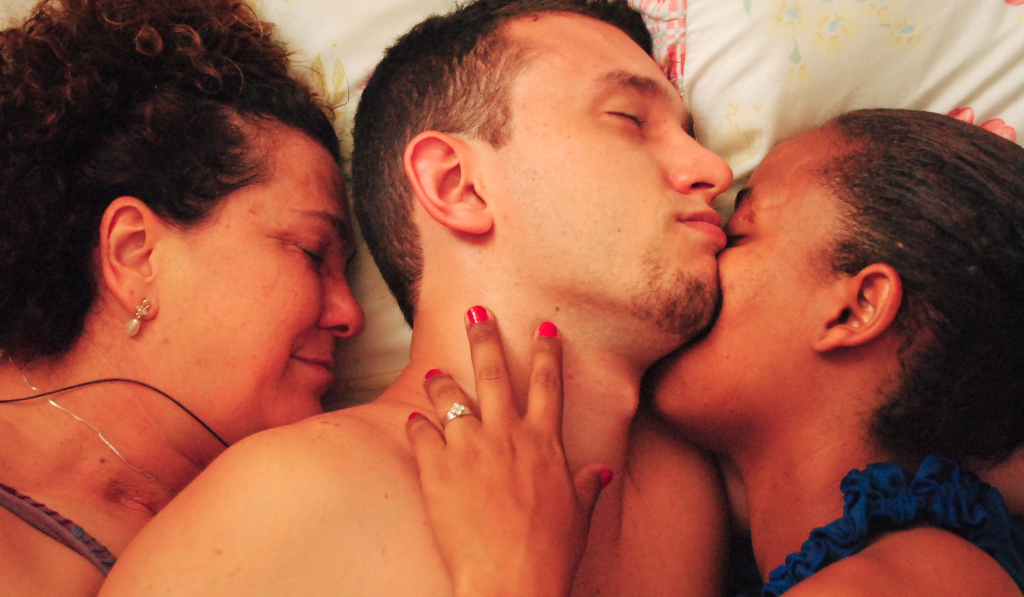 We are not talking about bonding friendly unions with sex.
We are not talking about bonding friendly unions with sex.
Two instead of one
I have two partners. I love them in different ways, not someone more, but someone less. It's just a different spectrum of sensations. Every relationship is unique and special. I'm trying to compare them and I can't. When I am with one partner, I completely immerse myself in it.
Instead of walking
People find time for walks, series, games, reading books. Why can't they find time for a relationship? I don't make any charts. I wanted to meet someone - I met. Polyamors who have more partners have schedules, they have everything planned: what, when, with whom.
How to explain to children
In my environment in polyamorous unions there are only very small children. They are not interested in what kind of relationship the parents have with their partners. Just a nice person comes to visit. Moreover, in polyamorous unions, people support each other. I have a friend who has two husbands. She has a child from her main partner, but the second one also nurses the child, helps, takes her to the clinic, buys some things.
She has a child from her main partner, but the second one also nurses the child, helps, takes her to the clinic, buys some things.
Cheating or open relationship?
Cheating and open relationships are completely different things. I asked cheaters who regularly take some girls secretly from their wives how they feel about polyamory. They were all against it, because it's one thing to cheat on yourself and another to let your partner do it. You must reframe your thinking and understand that your spouse can build a relationship with someone else. But people prefer, instead of negotiating, to secretly change.
Who can become polyamorous
To become polyamorous, you need to be able to talk. Emotional intelligence and empathy play a big role. Polyamory is radical honesty. If in monogamous relationships we are taught somewhere to be cunning, to be wise, not to react to something, in polyamory you understand that you can no longer act like that. The more you lie, the more it will backfire in the future.
Photo: Getty Images
What is polyamory: pros and cons, difference from polygamy
- What is polyamory
- What is the difference between polyamory and polygamy
- Why people choose polyamory
- For and against polyamory
- Polyamory in Russia and in the world
- Expert comments
What is polyamory
Polyamory, or ethical non-monogamy - the presence of several partners and intimate relationships. They can be both sexual and platonic, but always with the full consent of all parties, regardless of gender.
Advertising on RBC www.adv.rbc.ru
One in five Americans have been in a non-monogamous relationship in the past, and about one in 20 admits to one today. Studies show that partners in such relationships are happy on a par with married monogamous people [1]. Polyamorous relationships require openness, trust, the consent of all participants, as well as good communication skills, clear boundaries and mutual respect. Polyamory is different from other forms of open relationships, such as swing, which are predominantly sexual relationships involving other people or couples without emotional attachment.
Polyamory is different from other forms of open relationships, such as swing, which are predominantly sexual relationships involving other people or couples without emotional attachment.
Polyamory is not legally recognized as a form of sexual orientation. But this question remains the subject of much controversy among sexologists and "practicing" polyamorists. Many people in non-monogamous consensual relationships believe that this is their orientation. They tried to find satisfaction in a monogamous relationship, but failed. The term "polyamorous relationship" is still positioned as a personal choice or lifestyle.
© Cottonbro/pexels
What is the difference between polyamory and polygamy
Polyamory is often confused with polygamy or marriage to more than one person at the same time, but they are different concepts. Polygamy involves marriage to more than one person of the opposite sex, most commonly a man with multiple wives. Polyamory, while including married partners, describes a wider range of relationships, both heterosexual and LGBTQ+.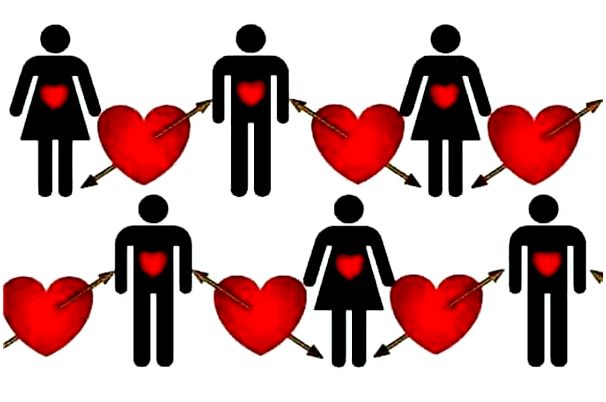
Non-monogamy can be different. Sexual relationships range from polyamory to polygamy. Other arrangements may include polyverity, a closed relationship that involves sexual and emotional commitment to a group of more than two people, and relationship anarchy, a format in which there is no hierarchy and, accordingly, there is no division of partners into "main" and "additional".
Why people choose polyamory
As a rule, partners consciously choose polyamory because they see it as an opportunity to deepen their connection with each other. Many people think that polyamory is cheating. But this is a common misconception. Cheating is deceit and betrayal, for example, if you and your partner agree not to have sex with other people, but one of you breaks this promise. The difference between cheating and polyamory is that in the latter case, partners agree to be in relationships with other people.
Some polyamory advocates see the value of the classic relationship between two partners as obsolete and rethink stereotypes about sex and romance.
“In my close circle, polyamory is the norm, and monogamy is the exception,” says Alexander, a fashion designer in a polyamorous relationship. - As a teenager, I fell in love with everyone, and the stereotype prevented me that you need to love someone alone. From the age of 18, I was in several parallel relationships at once, and this is not about one-time sex, but about an emotional connection as well. I have been married for 20 years and my wife is the best woman in the world. In the beginning, we considered ourselves monogamous. But the need for other people remained, and it was not clear how to talk about it. Later came to polyamory. We discussed issues of jealousy, betrayal, and it turned out that nothing prevents us from enjoying the company of other people. I think in terms of aesthetic experiences. It happens that a casual connection at a party develops into a wonderful spiritual contact that is not disturbed by distance. So, we meet with N in different countries, we do joint projects.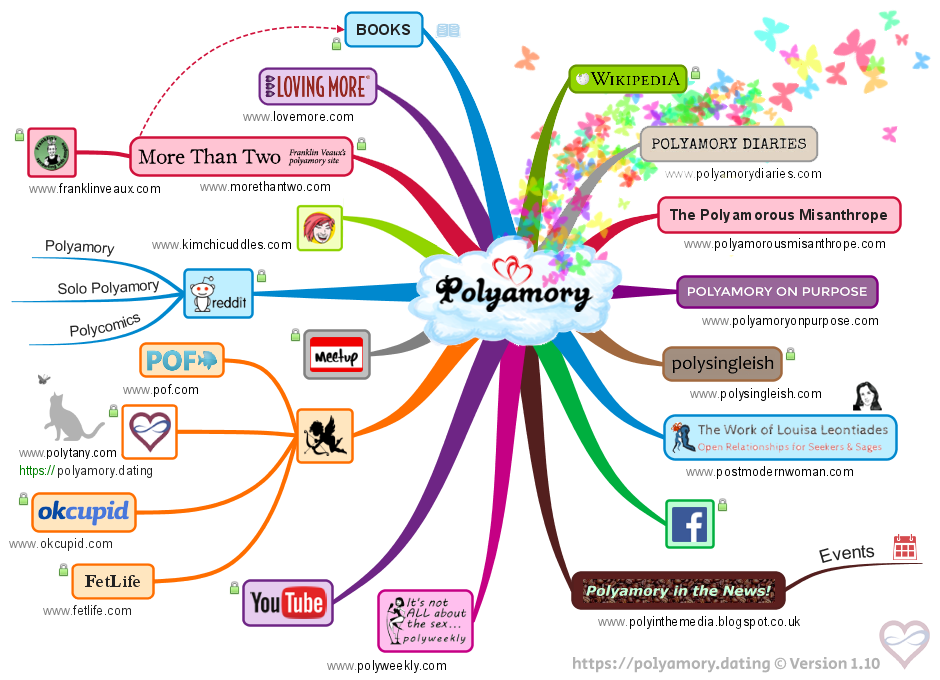 For me, a relationship that lacks a sexual aspect is inferior, and a person with whom an intimate relationship is associated is easier to trust.
For me, a relationship that lacks a sexual aspect is inferior, and a person with whom an intimate relationship is associated is easier to trust.
There is no standard test for polyamory tendencies. Relationships exist in order to be happy in them. Therefore, to the question “Is polyamory right for you?” the answer will be extremely simple. It is only important to decide how comfortable it is to let several people into your life and share partners with others.
© Rene Ranisch/Unsplash
Pros and cons of polyamory
Any relationship can be destroyed by jealousy and arguments about raising children, warns Alena Golzitskaya, systemic family psychotherapist, researcher at the Psychological Institute of the Russian Academy of Education. In polyamorous unions, these aspects are complicated by the number of participants. Polyamory can be kept secret from close friends and family. According to the non-profit organization Loving More, at least one in four polyamorous people have been discriminated against.
Arguments in favor include the following:
- A polyamorous relationship in which all participants know about each other, voluntarily accept this fact and try to take care of the interests of partners and their feelings, may seem to be the most humane option, where there is no place for betrayal and possible harm caused to the psyche of each of the participants.
- Among the positive aspects, one can single out the potential for a deeper understanding and elaboration of relations as such, a careful attitude towards partners, more time spent on establishing and maintaining a quality connection. It is impossible to be in a long-term polyamorous relationship and not strive to better understand all the participants, their motivation.
- The most intriguing of the arguments for is the experience of living an emotional and intimate connection with several partners at once, without the burden of guilt and fear of being discovered, without clarifying the relationship and causing pain to those you love.
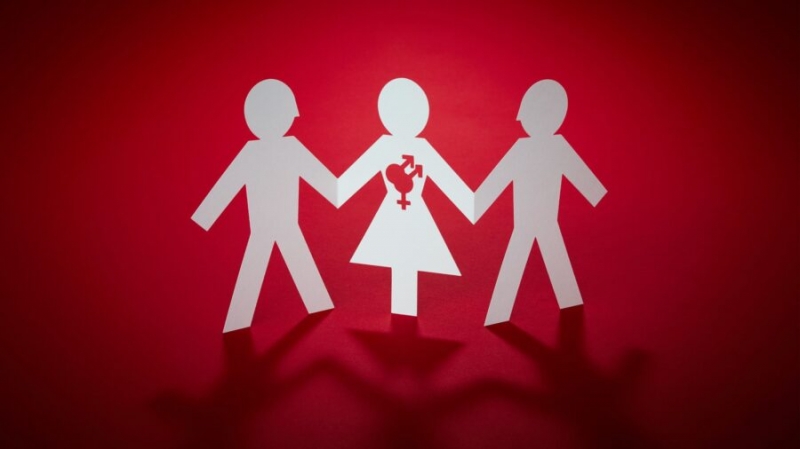 If in polyamorous unions it is possible to build a balanced interaction in which everyone feels comfortable, then the bonuses from such communication can more than exceed the resources spent.
If in polyamorous unions it is possible to build a balanced interaction in which everyone feels comfortable, then the bonuses from such communication can more than exceed the resources spent.
At the same time, the very theoretical model of polyamory — everyone accepts everyone, approves and enjoys loving everyone they like — in practice, it often encounters a harsh reality. Some people are accustomed to wanting the exclusivity of a relationship, especially when falling in love with a partner is great and completely captures. Then any applicant for his attention is perceived as a threat, which gives rise to anger, jealousy and leads to suffering. Thus, it can be difficult to achieve a balance in a relationship when the new person is perceived not as a potential breaker, but as someone who is important to the partner and deserves respect.
© Katerina Holmes/Pexels
Another challenge is making the decision to reformat the relationship. It happens that one in a couple is ready to go for this experiment, while the second is forced to agree, realizing that if he refuses, he will be left or deceived. Under such conditions, it is almost impossible to talk about the free choice of this form of relationship.
Under such conditions, it is almost impossible to talk about the free choice of this form of relationship.
And you also need to understand that with the increase in the number of partners, the amount of attention and investment that is required to be done in order to satisfy their relationship needs inevitably increases. Thus, one must be prepared to master the skills of organizing interaction in which no one will be deprived, otherwise a collision with resentment, envy and anger of one of the partners is inevitable, which does not strengthen the union.
Polyamory in Russia and around the world
To collect statistics, sociologists conduct surveys among respondents from polyamorous websites and send out questionnaires. It should be borne in mind that among the participants there may be simply interested people and those who do not intend to move away from monogamy. In October 2015, 5043 people aged 13–55 were interviewed [2]. The status of the respondents was assessed using the question “Do you consider yourself polyamorous?”. Answer options were offered:
Answer options were offered:
- no, and I never would;
- no, but was before;
- no, but would like to;
- yes.
The study showed that 59.8% of those surveyed consider themselves monogamous, 25.5% would like to try polyamorous relationships, 7.6% indicated that they were in them in the past, and 7.1% are polyamorous. The number of people from the latter group was higher than the researchers expected. They attribute the high rate to sample bias. It included social media users who take online personality tests. Often these are young, liberal, atheistic and non-heterosexual people.
© openpsychometrics.org
In terms of gender, there are more polyamorous men among men, while women tend to be monogamous in the majority.
© openpsychometrics.org
Age doesn't really change how you think about relationships with multiple partners. After the age of 33, theoretical interest in them decreases against the background of a larger number of both monogamous and polyamorous respondents.
© openpsychometrics.org
In 2015, the poll was also conducted by the American Institute of Public Opinion Gallup [3]. According to the results of the research, it turned out that the number of people choosing polygamy has almost doubled compared to 2001.
Expert comments
Alena Golzitskaya, systemic family psychotherapist, researcher at the Psychological Institute of the Russian Academy of Education
So far in Russia (as, I believe, in the entire Western world), polyamory is treated with caution. There are no official statistics for our country, and there won't be for a long time. Still, it takes time to introduce something new into such a highly regulated sphere of life as marriage or a romantic partnership.
Apparently, the choice of polyamory is due to the fact that the usual forms of organizing relationships are no longer satisfying. An increase in life expectancy, the emergence of the opportunity to have several relationships, and not just one, orientation to one's own interests and needs - all this leads to the fact that a person is trying to figure out how to arrange the intimate part of his life in a more acceptable way than just entering into secret relationships .
Polyamory may be an attempt to revise the rigid norms of public morality, dictating that only the relationship of two people can be considered as falling under the category of marital or love.
The question "How to come to terms with a partner's polyamory?" wrong. Only a union of several people formed on a voluntary basis can be polyamorous, but if one of the participants must accept such a fate, this is no longer a polyamorous union, but abuse. Not always in polyamorous unions, all participants have sexual relations with each other. So, for example, in the union of one woman and two men, the latter may not have any physical relationship with each other. And in general, this is what polyamory and a voluntary form of interaction are for, so that no one is forced to do something that he is not ready to do or does not want to do.
Arina Vintovkina, sexologist, psychologist, journalist, author of the blogs @vintovkina_arina and the telegram channel “This is normal”, married, 12 years of marriage, in a polyamorous relationship for four years
I am for kindness and awareness, against hypocrisy, gender stereotypes, hetero- and monocentrism. Analyzing my relationships and polyunions of friends, I can say that the only common denominator for adequate polyamory is the absence of initially unsuccessful starting conditions. For example, when people think about polyamory when they find themselves in a crisis situation, and hope to “fix” the relationship in this way. Before going polyamorous, my husband and I were monogamish for several years. The difference between this term and classical monogamy is that we had more sexual freedom, but the relationship was not completely open. At the same time, sex-positive thinking and mutual trust were always present. When a person appeared in my life, to whom something inside me responded and flared, I immediately informed my husband about it. I wanted to share the joy with a loved one.
Analyzing my relationships and polyunions of friends, I can say that the only common denominator for adequate polyamory is the absence of initially unsuccessful starting conditions. For example, when people think about polyamory when they find themselves in a crisis situation, and hope to “fix” the relationship in this way. Before going polyamorous, my husband and I were monogamish for several years. The difference between this term and classical monogamy is that we had more sexual freedom, but the relationship was not completely open. At the same time, sex-positive thinking and mutual trust were always present. When a person appeared in my life, to whom something inside me responded and flared, I immediately informed my husband about it. I wanted to share the joy with a loved one.
Our main principle in polyamorous relationships has been and remains unchanged: first we discuss the next step, then we take it.
Being openly polyamorous means often repulsing attacks and making excuses.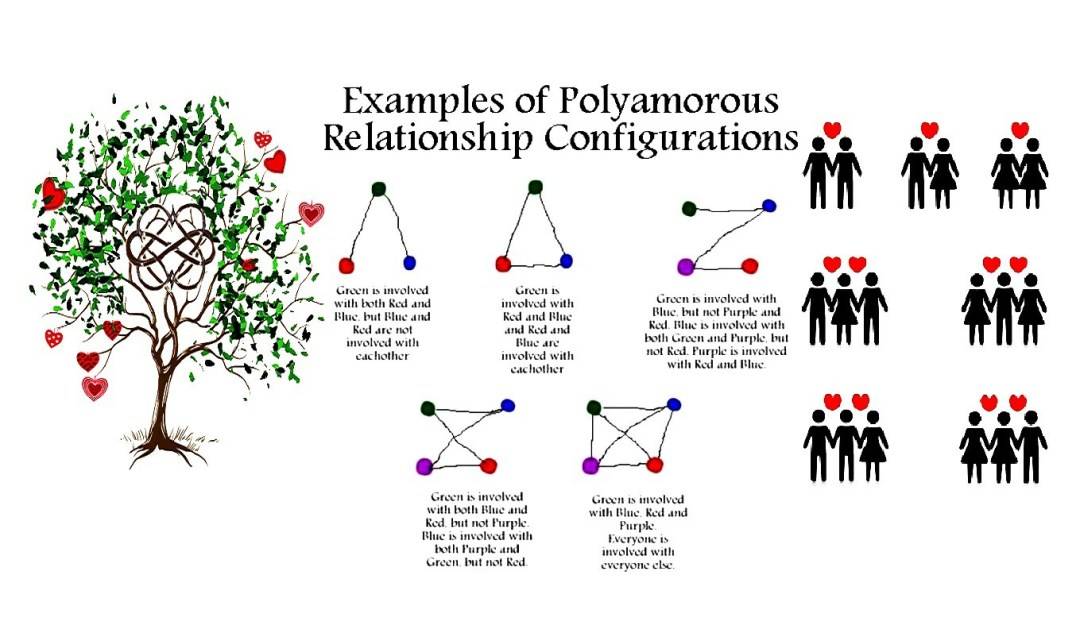 I am calm about any private opinion, when it is expressed without obvious hostility. In recent years, I have been called both a narcissist and a person with a mental disorder, reproached for childhood trauma and problems with self-esteem. I can say one thing: by itself, the format of relationships, whatever it may be, does not say anything about human problems or pathologies of the psyche, it is a matter of motivation in each specific case. And it is impossible to determine it from the threshold if you are not a psychic. There is very little research on polyamory. But those that are, objectively show that there are no differences in personality tests, regardless of the number of partners. Polyamorous people are no more neurotic or immature.
I am calm about any private opinion, when it is expressed without obvious hostility. In recent years, I have been called both a narcissist and a person with a mental disorder, reproached for childhood trauma and problems with self-esteem. I can say one thing: by itself, the format of relationships, whatever it may be, does not say anything about human problems or pathologies of the psyche, it is a matter of motivation in each specific case. And it is impossible to determine it from the threshold if you are not a psychic. There is very little research on polyamory. But those that are, objectively show that there are no differences in personality tests, regardless of the number of partners. Polyamorous people are no more neurotic or immature.
For example, there was a 1986 comparative study on the inability to be in a long-term relationship with 80 couples. Some of them were monogamous, others preferred an open relationship. Five years later, both of them had approximately the same statistics on parting - about 20%.


